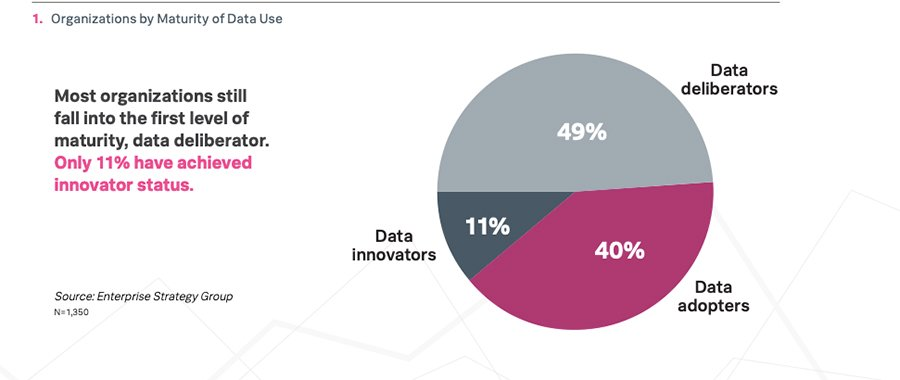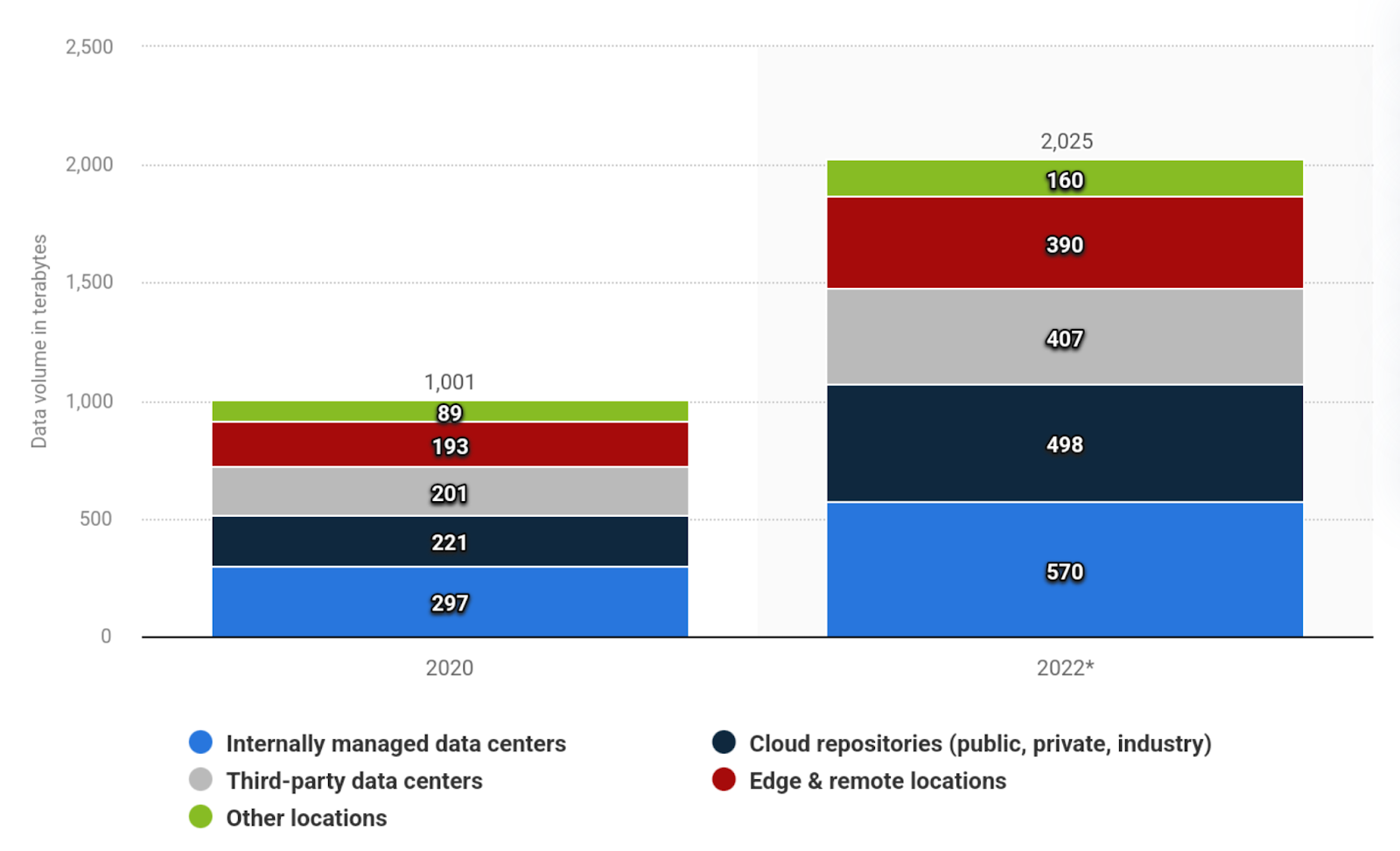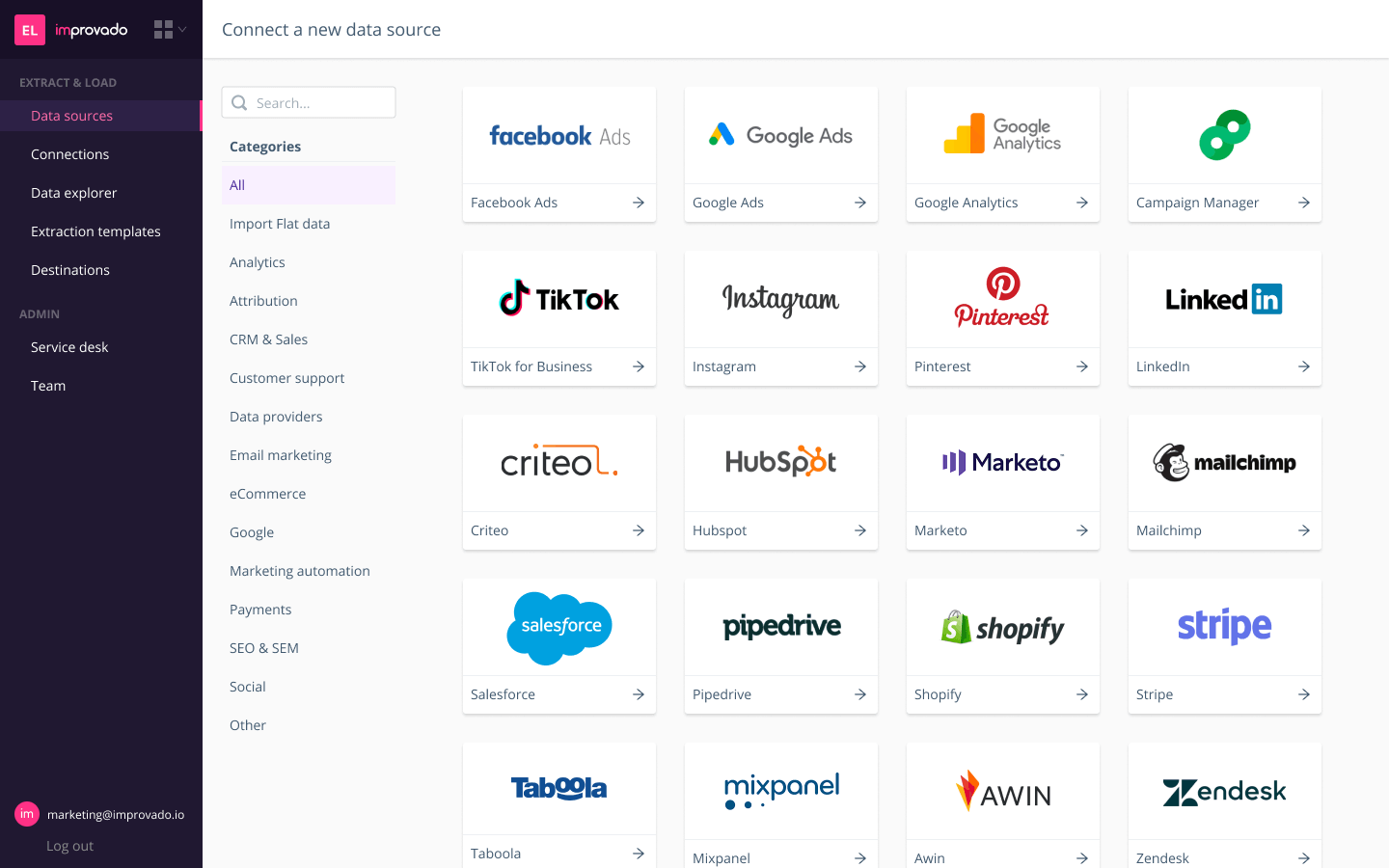Organizations generate staggering amounts of data from operational systems such as connected devices, cloud storage platforms, and more. This data is collected and stored—but is not always converted into useful insights.
An industry survey revealed that 43% of collected data remains largely unused by businesses. As more businesses turn to data for decision making and customer engagement, the data they use must deliver valuable insight rather than simple explanations of data points.
Data observability can help business leaders go beyond a rudimentary understanding of operational data to achieve a truly holistic view of their organization and its data processes.

What Is Data Observability?
Data monitoring and data observability are sometimes used interchangeably but these functions are unique and have different purposes. Data monitoring refers to the periodic and proactive analysis of data quality using key data analytics metrics. This process, while still proactive, is performed at fixed intervals and can sometimes lead to data issues going unnoticed for some time.
Data observability, on the other hand, refers to an organization’s ability to retain complete visibility over the health of its data and the processes that affect data health. Observability goes beyond regular data analysis by conducting constant and automated monitoring to highlight data issues in a timely manner for immediate and effective resolution.
As data becomes more integral to efficient operations and business continuity, organizations must ensure that their most critical datasets are kept in the best condition possible. Data observability is a crucial component in any business’ data management strategy. Data observability can help businesses ensure their data generates meaningful insight.
How Organizations Are Using Their Data Now
Another important question that needs to be answered is: why companies should care about data observability and data quality at all? Let’s review some of the most crucial use cases where companies depend on meaningful and reliable insights.
Data-driven decision making
Business leaders make highly consequential decisions on a regular basis. From the design of internal policies to analyzing sales and marketing strategies, each strategy impacts the business’s long-term success. Therefore, it’s essential that business leaders are empowered to make informed decisions using the latest data available to them instead of relying on gut feelings or outdated assumptions.
Data-driven decision making is increasingly necessary for business leaders, and executives that fail to take full advantage of their business data can find themselves irreversibly losing ground to their competitors. Data-based decisions allow business leaders to put their plans and decisions into the context of a constantly evolving marketplace by analyzing market conditions and internal data in real time.
Understanding and responding to customer behavior
Fluctuations in market conditions have numerous causes but none of these factors is as consequential as changing customer needs and preferences. Business leaders must understand how each customer makes purchase decisions and how their preferences affect their behavior. Customer-facing businesses are constantly collecting information on how customers interact with them, the effectiveness of key customer touch points in driving sales, and customer satisfaction levels. As customer demographics evolve over time, business tactics and operations must also evolve to reflect the needs of a new pool of customers.
The ease with which social media amplifies customer voices also increases pressure on businesses to preemptively identify and resolve potential customer issues. Modern customers are also accustomed to personalized communication and brand interactions. None of this is achievable without a consistent stream of reliable and accurate customer information.
Identifying Opportunities and Challenges in Rapidly Evolving Marketplaces
In highly competitive marketplaces, the first mover advantage can be extremely valuable. It can give businesses an opportunity to establish strong customer relationships, learn about the industry, and refine product offerings even before competitors have a chance to fully understand the opportunities available to them.

While many organizations have included data in their regular operations, most have failed to achieve any significant maturity in their data processes. A recent study found that almost half of organizations still fall into the first level of data maturity while only 11% are considered data innovators, the highest level of maturity in this survey.
Businesses can use internal data and pair that with publicly available industry data to achieve an accurate overview of the challenges and opportunities within their business environment. Regular analysis of such data also allows business leaders to identify and react to market opportunities quickly and effectively.
Learn how to move forward on the analytics maturity curve and get ahead of competition with our guide
Why data observability Is key for insight generation
There are several ways data observability influence the insight generation process and its outcomes. Let’s take a quick look at each of them.
Reliability and high quality data builds confidence in data utilization
Data is only as useful as the insights it can help businesses generate. It can help executives make better decisions, improve resource utilization, and cut operational costs. Despite these benefits, almost half of all employees still indicate that they tend to follow their gut instinct to make decisions. There are two major factors here; data reliability and data access.
For employees to have faith in data-driven decisions, they must trust the underlying data that is used to make those decisions. Employees should understand and participate in organization-wide data collection processes.
This involvement with data collection and transfer can give employees a greater sense of how operational information can be used—and they can observe the impact that data observability can have on data quality. Consistent exposure to high quality data and well-defined data processes can encourage employees to use data to make informed decisions more often.
The second reason data remains underutilized is inconsistent data access. Businesses can often be concerned that data integrity, accuracy, and security may be compromised if data is readily available to employees across the organization.
On the other hand, restricted data access leads to the formation of data silos and a lot of guesswork in decision-making. Data observability allows business leaders to grant this access to employees while ensuring that data quality and reliability remain high.

Real-time data delivery improves the efficiency of data-centric workloads
A major benefit of data observability is that it provides business leaders with an accurate view of how data processes help the business achieve its goals. This often leads to crucial datasets being collected, shared, and organized more efficiently. Operational teams can then use this data to inform sales outreach, marketing strategies, financial forecasting, and so much more.
These business processes are time sensitive and rely on a steady stream of highly accurate data. Data processes that are built with speed and accuracy in mind can provide business teams with critical insights in real time. With real-time delivery of data, information can flow seamlessly across departmental lines. This helps operational teams receive the information they need while providing business leaders with a holistic view of business operations and performance in real time.
Timely identification and rectification of data issues
Data issues can be extremely disruptive if left unchecked for long periods of time. Significant data problems like inconsistencies or inaccuracies can result in disruptions to service delivery.
This leads to significant losses in working hours and productivity, monetary fines, and reputation damage. As more businesses become reliant on data to conduct regular business activities, identifying and resolving data issues in a timely manner becomes an existential challenge instead of simply an operational one.
Data observability simplifies the processes that keep business data safe, accessible, and reliable at all times.
Processes can be automated to alert the relevant teams and business leaders should data issues be found. Modern AI-based data management systems even provide data teams with recommendations to help them resolve data issues in record time.
4 Tips for achieving data observability at your organization
Now, it’s time to figure out the ways to achieve and improve data observability at your organization. Here’s our top 4 tips on how to treat your data infrastructure to get the most out of it.
1. Be aware of the information blind spots caused by existing operational silos
Operational silos exist in most modern organizations and can prevent business leaders from achieving a holistic view of their operations. Incompatible data management systems used across the organization, inconsistent participation in data management, and resource intensive data management processes can lead to entrenched information silos between departments.
In an increasingly hybrid work environment, closing these gaps is crucial to insight generation and effective data management.
Business leaders must identify information blind spots within the organization, build effective data pipelines, and design processes to allow important information to be collected, organized, and shared easily across the organization.
These data processes must be easy for non-technical staff to understand. This will allow business leaders to encourage greater participation in data management and ensure that employees at all levels can make full use of the benefits that holistic data analysis can provide.
2. Create a single source of truth for all your data
Businesses have a tendency to spread vast amounts of data across multiple storage solutions and locations. This can be to reduce costs—or it could be an indication of a fragmented data management strategy across the organization.
Data is often stored across internally managed data centers, third-party data centers, cloud repositories, remote locations, and more. This haphazard way of storing data has not changed significantly in recent years and many businesses still use a combination of solutions.

The best way to uncomplicate data storage and build strong foundations for data observability is for organizations to create and maintain a data warehouse.
A centralized data warehouse allows all interested parties access the required data without permission hassle and tedious conversations with the IT department. Just log in and download or start analyzing data you want in a cloud environment, or right in the on-premise data storage.
For example, let’s consider marketing data. Teams often work with inconsistent data gathered across tens of different platforms, channels, and even regions. A data warehouse backed with a reliable data pipeline helps to structure the data and make it more accessible for employees across the organization.
Here, at Improvado, we help marketing and sales teams align their data and build a holistic view of the revenue team performance. Our data pipeline integrates with 300+ data sources to extract data and load it to a data warehouse of your choice. Plus, Improvado automatically normalizes disparate data to let analytics teams focus on the analysis, instead of joining and unioning data.

As a result, teams save hundreds of hours on manual data extraction and get a single source of truth for all of their revenue data.
3. Make full use of automated data processes to increase efficiency
Effective data management is extremely important for businesses that wish to use industry and operational data to make decisions, plan business strategies, reduce costs, and improve efficiency. However, manual processes can be highly resource intensive.
Cleaning, organizing, formatting, and correcting datasets take significant time away from high value tasks and are also prone to issues caused by human error.
Data processes don’t have to be inefficient and tedious. Modern data observability solutions can help businesses automate critical but repetitive tasks. Once a set of data is deemed to be of high quality, a data observability platform helps businesses monitor the health of that data and can highlight problem areas when they arise.
This allows data teams to be highly efficient in their data management processes and reduces the likelihood of data issues affecting business operations.
4. Ensure all your digital solutions work as a cohesive and interoperable stack
Enterprises have been adopting and implementing digital solutions across various operational departments. However, this adoption is not always well planned or consistent. Teams that are viewed as independent, such as finance and legal teams, sometimes have highly specialized software and data management systems that don’t interweave with the solutions used by other teams within the organization.
Data observability requires business leaders to view data from every part of their organization from a single location. It is, therefore, crucial that all the digital solutions used by different departments integrate into a centralized system. A cohesive and interoperable solution stack can help businesses balance the need for specialized solutions while retaining a holistic view of the operation.
Modern businesses are becoming increasingly aware of the benefits that data collection and analysis can provide. Information silos, poor data quality, and inconsistent insight generation can prevent them from experiencing these benefits to their full extent. Data observability can help businesses overcome these challenges by ensuring that their data is always available and reliable enough to use for insight generation. The right solution can simplify the way businesses manage their data while freeing up data teams to focus on high value tasks instead of cleaning data.
Turn your raw data into actionable insights
Data observability is a trend that’ll stick with us for a long time. Data-driven teams that rely on quality insights can’t ignore the importance of a well-thought data infrastructure, benefits of the data warehouse, and time-effectiveness of a data pipeline. If you’re building your organization around data and want to advance on the analytics maturity curve, start over data accessibility.
Improvado can provide you with a data warehouse where you can organize all of your marketing and sales insights. Revenue data is one of the hardest to align and transform it into a digestible view, since it is collected across tens of different platforms. So, having analysis-ready data at hand signficanlty boosts analysts productivity, makes it easier to uncover new revenue growth trends, and make informed decisions.
.png)
.png)



.png)
